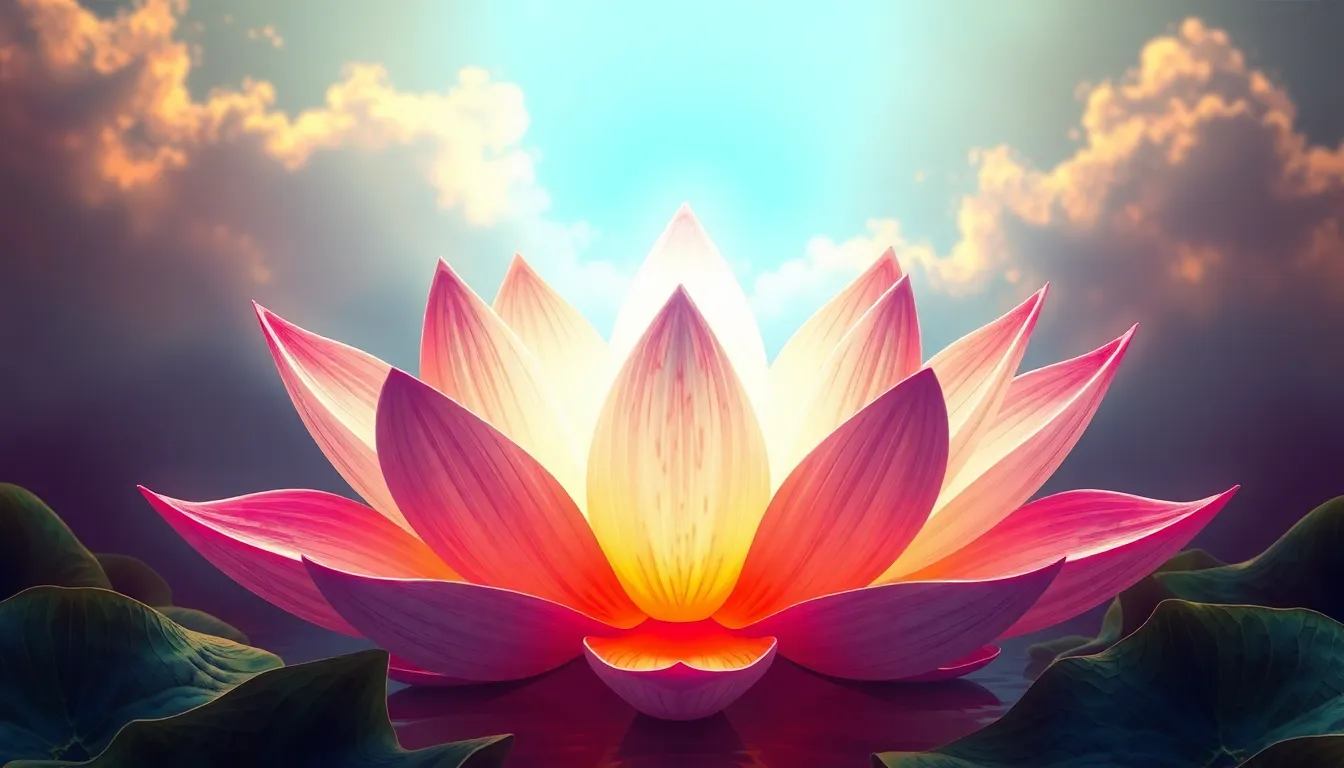The Spiritual Importance of the Egyptian Lotus
I. Introduction
The Egyptian lotus, scientifically known as Nymphaea caerulea, is a stunning aquatic flower that has captivated both ancient and modern civilizations. This enchanting plant, with its vibrant blue petals and golden center, holds profound significance in ancient Egyptian culture. From being a symbol of creation to representing rebirth, the lotus flower is deeply woven into the spiritual and cultural fabric of ancient Egypt.
The purpose of this article is to explore the rich historical context, symbolism, and contemporary relevance of the lotus flower in Egyptian mythology and spirituality.
II. Historical Context
The lotus flower played a pivotal role in ancient Egyptian mythology, often associated with the sun and creation. It was believed that the lotus emerged from the primordial waters at the beginning of time, signifying the birth of the sun god, Ra. This mythological narrative highlights the flower’s importance as a symbol of life and creation.
In ancient Egyptian art, the lotus is frequently depicted in various forms, ranging from intricate carvings to vibrant paintings. Hieroglyphics often utilized the lotus as a symbol of purity and beauty. Its presence in tombs and temples serves as a reminder of the lotus’s significance in both life and afterlife.
Lotus symbolism extended beyond art into the realm of rituals and ceremonies. The flower was commonly used in religious practices, including offerings to the gods and in funerary rites, where it was believed to assist the deceased in their journey to the afterlife.
III. Symbolism of the Lotus Flower
The lotus flower is predominantly recognized as a symbol of rebirth and regeneration. Its unique ability to bloom beautifully on the surface of murky waters encapsulates the theme of transformation and renewal. This symbolism resonates with the cyclical nature of life and death in ancient Egyptian beliefs.
Additionally, the lotus has a strong connection to the sun, further solidifying its place in creation myths. The daily cycle of the sun rising and setting parallels the lotus’s blooming and closing, emphasizing the interconnectedness of life, death, and rebirth.
Moreover, the lotus embodies duality—representing both beauty and resilience. Its ability to thrive in challenging conditions serves as a powerful metaphor for overcoming adversity and finding beauty in struggle.
IV. The Lotus in Egyptian Religion
The lotus flower is closely associated with various deities in ancient Egyptian religion. Notably, it is linked to Isis, the goddess of fertility and motherhood, and Ra, the sun god. The lotus was often depicted in religious texts and prayers, symbolizing divine creation and protection.
In funerary practices, the lotus played a critical role. It was included in burial rituals, symbolizing the hope of rebirth in the afterlife. Many tombs contained representations of the lotus, believed to provide comfort and guidance to the deceased in their journey beyond death.
V. The Lotus as a Meditation Tool
In modern spiritual practices, the lotus serves as an effective focal point for meditation. Techniques often involve visualizing the lotus opening, symbolizing the unfolding of one’s consciousness and spiritual awakening.
The lotus also represents a journey toward enlightenment. As practitioners meditate on the lotus, they can reflect on their personal growth and transformation, drawing inspiration from the flower’s resilience and beauty.
Today, many contemporary spiritual practices are inspired by ancient beliefs surrounding the lotus. It serves as a reminder of the importance of inner peace and the pursuit of spiritual growth amidst the chaos of life.
VI. The Ecological Significance of the Lotus
The ecological role of the lotus in the Nile ecosystem is vital. It provides habitat and food for various aquatic species, contributing to the biodiversity of the region. The lotus also plays a role in maintaining water quality, acting as a natural filter and helping to stabilize the ecosystem.
Furthermore, the lotus symbolizes sustainability and environmental balance. In ancient Egyptian life, there was a profound intersection of spirituality and nature, as the lotus represented both physical and spiritual nourishment.
VII. Contemporary Relevance
In recent years, there has been a resurgence of interest in lotus symbolism within modern spirituality. The lotus is frequently referenced in meditation practices, yoga, and holistic healing, emphasizing its enduring power as a symbol of transformation.
The lotus also finds its place in art, literature, and popular culture today. It serves as a motif in various artistic expressions, representing beauty and the journey of personal growth. This continued fascination with the lotus highlights its relevance and adaptability within contemporary spiritual practices.
VIII. Conclusion
In conclusion, the spiritual importance of the Egyptian lotus is profound and multifaceted. From its historical roots in ancient mythology to its role in contemporary spiritual practices, the lotus remains a powerful symbol of rebirth, resilience, and enlightenment. Its legacy continues to inspire individuals on their personal spiritual journeys.
As we explore and incorporate lotus symbolism into our personal spirituality, we embrace the lessons it teaches us about transformation, beauty, and connection to nature. The lotus serves as a reminder that even in the murkiest waters, one can find beauty and rise above, embodying the essence of spiritual growth.




